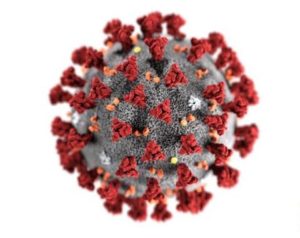BETHESDA, MD – January 17, 2024 – According to an NIH study released on June 3, 2023, eligible at-risk patients treated with Paxlovid were associated with having less severe illness and a lower fatality rate than eligible patients who did not have this treatment; however, fewer than 10% were treated with Paxlovid. The study period was 15 months long, between December 2021 and February 2023. By the close of the study, the rate of treatment with Paxlovid increased to about 15%. The paper is online but has not been peer-reviewed or published.
More than one million patients were selected from the U.S. National COVID Cohort Collaborative (N3C), a centralized national COVID-19 databank from more than 75 research institutions. Eligible patients were adults (greater or equal to 18 years old) who have tested positive for COVID-19 who are within 5 days of having COVID symptoms or a positive test if without any symptoms, at high risk with at least one risk factor for severe COVID-19 illness, with no contraindicated medical conditions or using any contraindicated medicine, and were not hospitalized within 3 days of having initial symptoms. At-risk people may be older or immunocompromised or with health conditions like obesity, diabetes, and cancer.
Paxlovid treatment consists of taking 2 medicines, nirmatrelvir and ritonavir, over 5 days. Patients taking Paxlovid were 26% less likely to be admitted to the hospital and 73% less likely to die from COVID-19. The authors estimated that over 50 million COVID cases with over 300 thousand deaths and more than 2.5 million hospitalizations during the study period could have been prevented if 50% of the eligible persons in the U.S. had taken Paxlovid.
There were numerous treatment disparities identified in the study. A greater likelihood of Paxlovid treatment occurred for people with a higher education level, having a job, of higher socioeconomic status, and of the white race. The authors feel that improving access to COVID treatment with Paxlovid would save lives and reduce the number of people with severe illness.
The study did not evaluate the frequency of side-effects from taking Paxlovid. According to a recent article from AARP online, Paxlovid has very few side-effects. The most common side-effects are metallic taste and diarrhea. Others are nausea and muscle aches. The side-effects are temporary and go away when the treatment ends. Some of the patients treated wIth Paxlovid have reported a recurrence of COVID symptoms after beginning to feel better. Research by the CDC and the FDA has shown that the ‘COVID rebound phenomena’ can also occur just as frequently in patients who have not taken Paxlovid. However, health care providers and patients alike may not be aware of this finding.
Persons 12 years or older who test positive for COVID or have symptoms for less than 5 days and are at high risk to become severely ill with COVID should contact their doctor to find out if they are eligible for treatment with Paxlovid.
Listen to the full report below:
Contact: Dr. Dick Needleman, Health reporter, 103.3 AshevilleFM, [email protected]
More Posts for Show: Asheville FM News Hour
